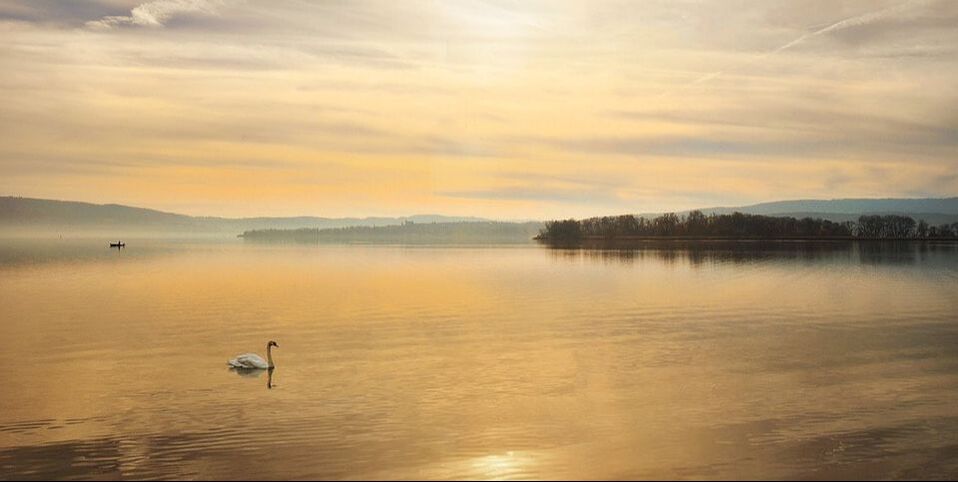|
The Swiss continue to surprise us with unexpected archaeological finds. Not so long ago, they excavated the remains of ancient people right in the middle of a city, and now - another sensation. The "Swiss Stonehenge" is hiding at the bottom of Lake Constance, located on the border of Germany and Switzerland. The megalithic structure was found at a depth of 4.5 meters. Divers made the unexpected discovery when they plunged to the bottom of the lake. The stones were recognized as man-made, evidenced by their appearance and location. The archaeologists were the first who were able to discern material valuable for history in the pictures of the divers. It is possible that the stones can be dated back to the Neolithic era. In the pictures taken underwater, it is clear that the stones were placed at equal intervals away from each other. It was this fact that prompted archaeologists to think of their man-made origin. “These stones, reaching up to 40 cm in length, are specially placed on a layer formed after the glacier melts, and did not arise in a natural way," experts say. Initially, it was assumed that these stones appeared in the lake 18 thousand years ago, after the glacier melted. However, new studies by scientists give reason to argue that they were erected by man during the Neolithic or Bronze Age. Some stones have an almost rectangular shape. Of course, much more analysis is needed, but the findings, after using the underwater GeoRadar, are stunning and extraordinary. According to archaeologists, studies have shown that the cairns (artificial structures in the form of a pile of stones) did not form naturally - they were made by humans. Archaeologists report that, during the Neolithic period, the megaliths presumably stood on the shore and were originally located along the coastline. A piece of a poplar tree, which was also found by divers, may have been used as material for the construction of a mound or house. Currently, there are several theories about the purpose of the stones, for example, that they served as a dam, burial mounds or signal pillars. The name "Swiss Stonehenge" in no way competes with the British original and was given to the object by German media, not archaeologists. However, the structures at the bottom of the lake have some similarities with the megalithic monument in Britain, because "prehistoric people needed to solve the equally difficult and amazing problem - transporting stones to the place of their installation”, - stresses the head of the excavations. The discovered objects have not yet been thoroughly analysed. As a result of the analysis, it is expected that more detailed information, which will also include 3D-visualization, will appear shortly. “Once archaeologists have shown possible 'new' ancient features, they can import the data into their iPads and take it to the field to do survey or excavation work. Technology doesn't mean we aren't digging in the dirt anymore - it's just that we know better where to dig.” Sarah Parcak
0 Comments
Leave a Reply. |
AuthorPhoenix Voyagers Archives
January 2023
Categories |
|




 RSS Feed
RSS Feed




